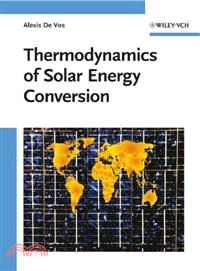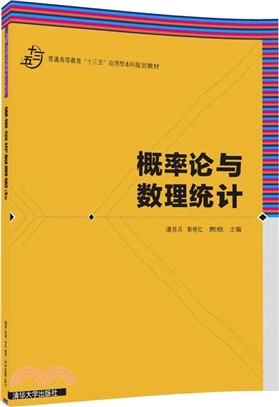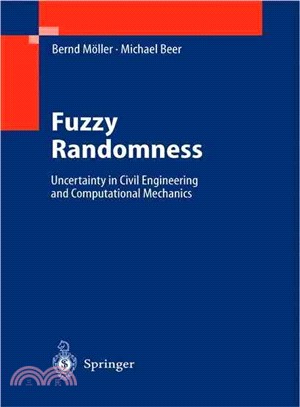Thermodynamics Of Solar Energy Conversion
商品資訊
ISBN13:9783527408412
出版社:John Wiley & Sons Inc
作者:De Vos
出版日:2008/02/13
裝訂/頁數:精裝/205頁
定價
:NT$ 5510 元優惠價
:90 折 4959 元
若需訂購本書,請電洽客服 02-25006600[分機130、131]。
商品簡介
作者簡介
目次
商品簡介
The physical framework used to describe the various conversions is endoreversible thermodynamics, a subset of irreversible thermodynamics. Thermodynamics of Solar Energy Conversion provides an excellent generalized introduction into principles of solar energy conversion for everybody knowing some basics of university mathematics. Described are situations which are not in equilibrium and in which entropy is continuously created, but which are nevertheless stationary. In dealing with endoreversible thermodynamics, the given information in this book enables the reader to calculate the explicit values for a broad class of processes. It is demonstrated that solar energy conversion is a process particularly suited to being described in this way.
"De Vos is a wonderful storyteller" —Prof. Dr. B. Andresen
"De Vos is a wonderful storyteller" —Prof. Dr. B. Andresen
作者簡介
Alexis De Vos is electrical engineer and physicist, graduated from the Universiteit Gent (Belgium). He is currently part-time system engineer of the Flemish interuniversity microelectronics research centre, and part-time professor at the department of Elektronica en informatiesystemen of the Universiteit Gent. His research is concerned with material science (polymers, semiconductors, metals, liquid crystals), microelectronics (thin films, chips) and energy sciences (thermodynamics, solar energy, endoreversible engines, reversible computing). Besides writing this book, he was co-editor of the book "Thermodynamics of energy conversion and transport" (published 2000). Since 1993, he is the coordinator of the pan-European Carnot Network on thermodynamics and thermo- economics of energy conversion and transport.
目次
1 Radiation.
1.1 Introduction.
1.2 Photon Modes.
1.3 Photon Statistics.
1.4 Planck’s Law.
1.5 The Stefan–Boltzmann Law.
1.6 Kirchhoff’s Law.
1.7 Why T4?
1.8 Exercises.
References.
2 The Solar System.
2.1 The Sun.
2.2 The Planets.
2.3 Starlight.
2.4 Moonlight.
2.5 Radiation from “Empty” Space.
2.6 Internal Heat Sources.
2.7 Conclusion.
2.8 Exercises.
References.
3 Thermodynamical Engines.
3.1 Introduction.
3.2 The Carnot Engine.
3.3 The Curzon–Ahlborn Engine.
3.4 Endoreversible Engines.
3.5 An Example.
3.6 The Stefan–Boltzmann Engine.
3.7 Conclusion.
3.8 An Example.
3.9 Exercises.
References.
4 Wind Energy Creation.
4.1 Introduction.
4.2 Preliminary Model.
4.3 Final Model.
4.4 Why 8%?
4.5 Tidal Winds and ZonalWinds.
4.6 Two Examples.
4.7 Exercises.
References.
5 Photothermal Conversion.
5.1 Introduction.
5.2 Solar Energy Efficiency.
5.3 The Müser Engine.
5.4 Why 13%?
5.5 Concentrators.
5.6 The Müser Engine with Concentrator.
5.7 Selective Black Bodies.
5.8 The Müser Engine with Bandgap.
5.9 Conclusion.
5.10 An Example.
5.11 Exercises.
References.
6 Photovoltaic Conversion.
6.1 Introduction.
6.2 Semiconductors.
6.3 The Solar Cell.
6.4 An Example.
6.5 Exercises.
References.
7 Hybrid Conversion.
7.1 Introduction.
7.2 Is a Solar Cell Really an Endoreversible Engine?
7.3 A Unified Model.
7.4 Alternative Model.
7.5 Onsager’s Principle.
7.6 Examples.
7.7 Exercises.
References.
8 Multicolor Conversion.
8.1 Introduction.
8.2 PhotothermalMulticolor Converters.
8.3 Photovoltaic Multicolor Converters.
8.4 Omnicolor Converters.
8.5 Two-Terminal Omnicolor Converters.
8.6 The Bose Engine.
8.7 Conclusion.
8.8 Two Examples.
8.9 Exercises.
References.
9 Chemical Reactions.
9.1 Introduction.
9.2 Reversible and Irreversible Chemical Engines.
9.3 The Generalized Endoreversible Engine.
9.4 Two Alternative Generalized Models.
9.5 The Endoreversible Chemical Reactor.
9.6 Conclusion.
9.7 Exercises.
References.
10 Photosynthesis.
10.1 Introduction.
10.2 The Photosynthesis Engine.
10.3 An Example.
10.4 Exercises.
References.
Post scriptum.
References.
Appendices.
A Constants.
A.1 Mathematical Constants.
A.2 Physical Constants.
B About the n-Dimensional Sphere.
C Kepler’s Second Law.
D About a Fourth-Degree Equation.
E The General Chemical Reaction.
F List of Symbols.
Index.
1.1 Introduction.
1.2 Photon Modes.
1.3 Photon Statistics.
1.4 Planck’s Law.
1.5 The Stefan–Boltzmann Law.
1.6 Kirchhoff’s Law.
1.7 Why T4?
1.8 Exercises.
References.
2 The Solar System.
2.1 The Sun.
2.2 The Planets.
2.3 Starlight.
2.4 Moonlight.
2.5 Radiation from “Empty” Space.
2.6 Internal Heat Sources.
2.7 Conclusion.
2.8 Exercises.
References.
3 Thermodynamical Engines.
3.1 Introduction.
3.2 The Carnot Engine.
3.3 The Curzon–Ahlborn Engine.
3.4 Endoreversible Engines.
3.5 An Example.
3.6 The Stefan–Boltzmann Engine.
3.7 Conclusion.
3.8 An Example.
3.9 Exercises.
References.
4 Wind Energy Creation.
4.1 Introduction.
4.2 Preliminary Model.
4.3 Final Model.
4.4 Why 8%?
4.5 Tidal Winds and ZonalWinds.
4.6 Two Examples.
4.7 Exercises.
References.
5 Photothermal Conversion.
5.1 Introduction.
5.2 Solar Energy Efficiency.
5.3 The Müser Engine.
5.4 Why 13%?
5.5 Concentrators.
5.6 The Müser Engine with Concentrator.
5.7 Selective Black Bodies.
5.8 The Müser Engine with Bandgap.
5.9 Conclusion.
5.10 An Example.
5.11 Exercises.
References.
6 Photovoltaic Conversion.
6.1 Introduction.
6.2 Semiconductors.
6.3 The Solar Cell.
6.4 An Example.
6.5 Exercises.
References.
7 Hybrid Conversion.
7.1 Introduction.
7.2 Is a Solar Cell Really an Endoreversible Engine?
7.3 A Unified Model.
7.4 Alternative Model.
7.5 Onsager’s Principle.
7.6 Examples.
7.7 Exercises.
References.
8 Multicolor Conversion.
8.1 Introduction.
8.2 PhotothermalMulticolor Converters.
8.3 Photovoltaic Multicolor Converters.
8.4 Omnicolor Converters.
8.5 Two-Terminal Omnicolor Converters.
8.6 The Bose Engine.
8.7 Conclusion.
8.8 Two Examples.
8.9 Exercises.
References.
9 Chemical Reactions.
9.1 Introduction.
9.2 Reversible and Irreversible Chemical Engines.
9.3 The Generalized Endoreversible Engine.
9.4 Two Alternative Generalized Models.
9.5 The Endoreversible Chemical Reactor.
9.6 Conclusion.
9.7 Exercises.
References.
10 Photosynthesis.
10.1 Introduction.
10.2 The Photosynthesis Engine.
10.3 An Example.
10.4 Exercises.
References.
Post scriptum.
References.
Appendices.
A Constants.
A.1 Mathematical Constants.
A.2 Physical Constants.
B About the n-Dimensional Sphere.
C Kepler’s Second Law.
D About a Fourth-Degree Equation.
E The General Chemical Reaction.
F List of Symbols.
Index.
主題書展
更多
主題書展
更多書展今日66折
您曾經瀏覽過的商品
購物須知
外文書商品之書封,為出版社提供之樣本。實際出貨商品,以出版社所提供之現有版本為主。部份書籍,因出版社供應狀況特殊,匯率將依實際狀況做調整。
無庫存之商品,在您完成訂單程序之後,將以空運的方式為你下單調貨。為了縮短等待的時間,建議您將外文書與其他商品分開下單,以獲得最快的取貨速度,平均調貨時間為1~2個月。
為了保護您的權益,「三民網路書店」提供會員七日商品鑑賞期(收到商品為起始日)。
若要辦理退貨,請在商品鑑賞期內寄回,且商品必須是全新狀態與完整包裝(商品、附件、發票、隨貨贈品等)否則恕不接受退貨。





























